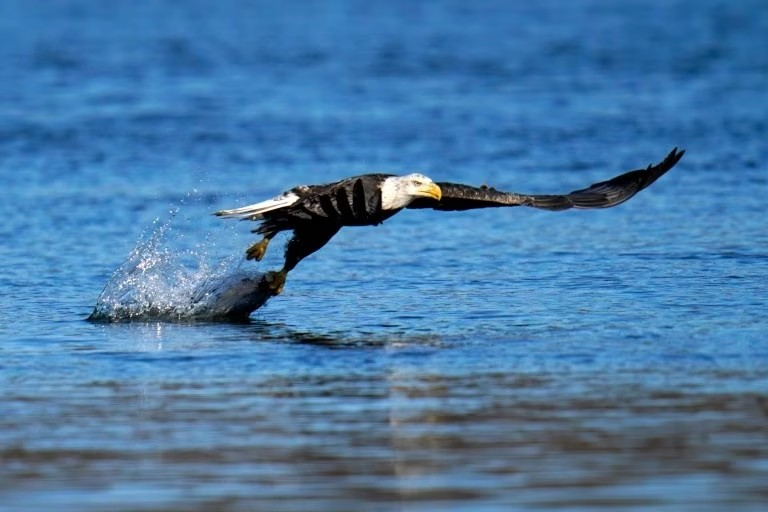
The biggest threat bald eagles now face is lead poisoning. The lead mostly comes from lead bullets, which shatter into pieces when they hit a target. Eagles ingest the lead fragments when they scavenge dead animals or gut piles. They can also get lead from fishing tackle in fish.
According to the American Eagle Foundation, “A lead fragment the size of a grain of rice is lethal to a mature bald eagle, meaning that a standard 150 grain lead bullet can poison 10 eagles.”
Tracie Young, rehabber for Raven Ridge, tells us that of the 18 bald eagles they took in during 2024, all but two tested positive for elevated levels of lead. Some had levels higher than their testing device could measure. (And no, not all of the poisoned eagles survived.)
Wildlife expert warns of dangers of lead poisoning
The best way to deal with this problem is to remove the source; switch from lead ammo and fishing tackle to non-toxic metals. The change is happening slowly – non-lead alternatives were more expensive than lead, and initially hard to come by. But prices are dropping, and the safer products are becoming easier to find. Most importantly, the changeover is increasingly being supported by hunters and fishers themselves. One may hope that someday having to treat our national bird for lead poisoning will be a thing of the past
To learn more about the Game Commission got the eagle chicks to replenish the species, click here.
To view the U.S. Fish and Wildlife Commission eagle nest map, click here.
To read the American Eagle Foundation article on lead poisoning, click here.
To view a Game Commission video on lead poisoning, click here.

Comments